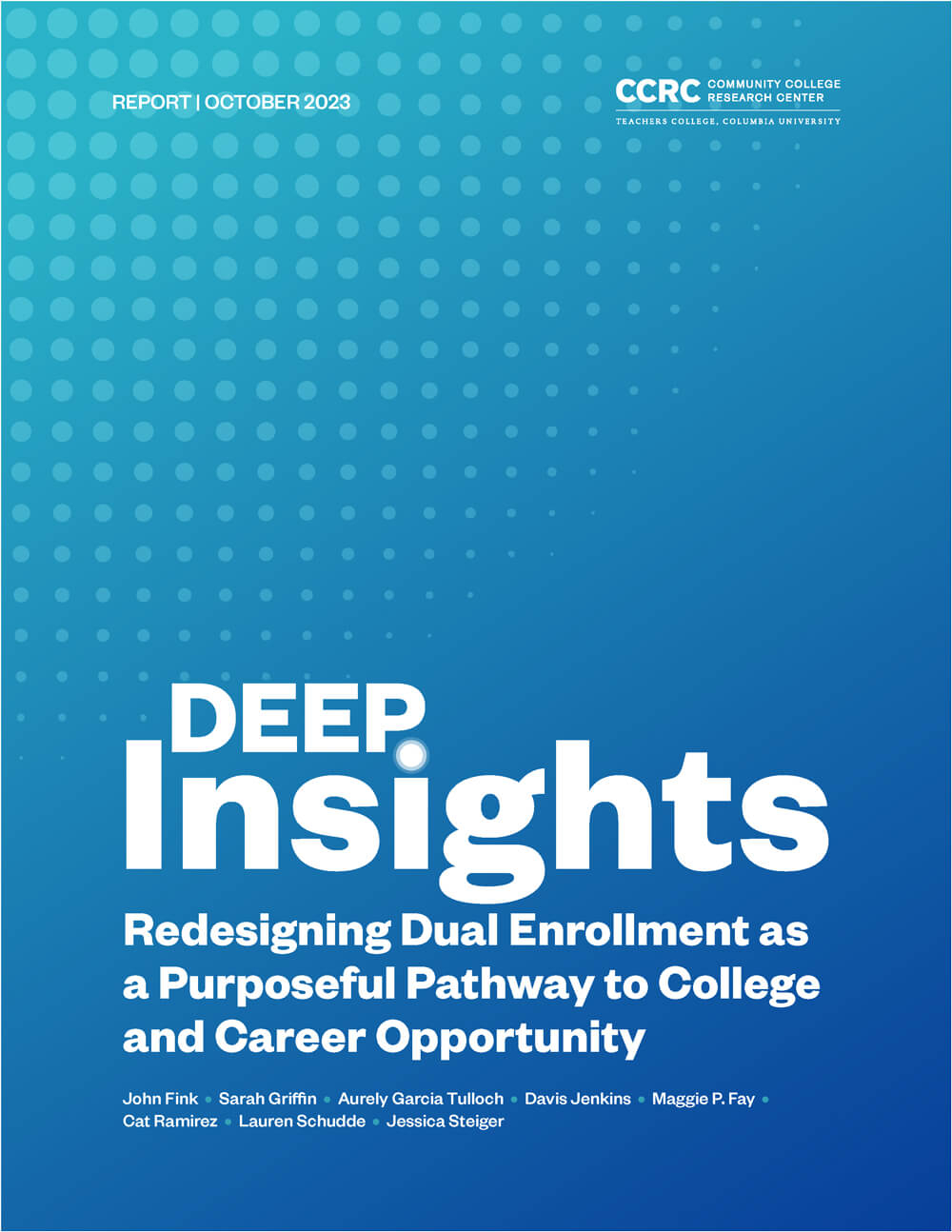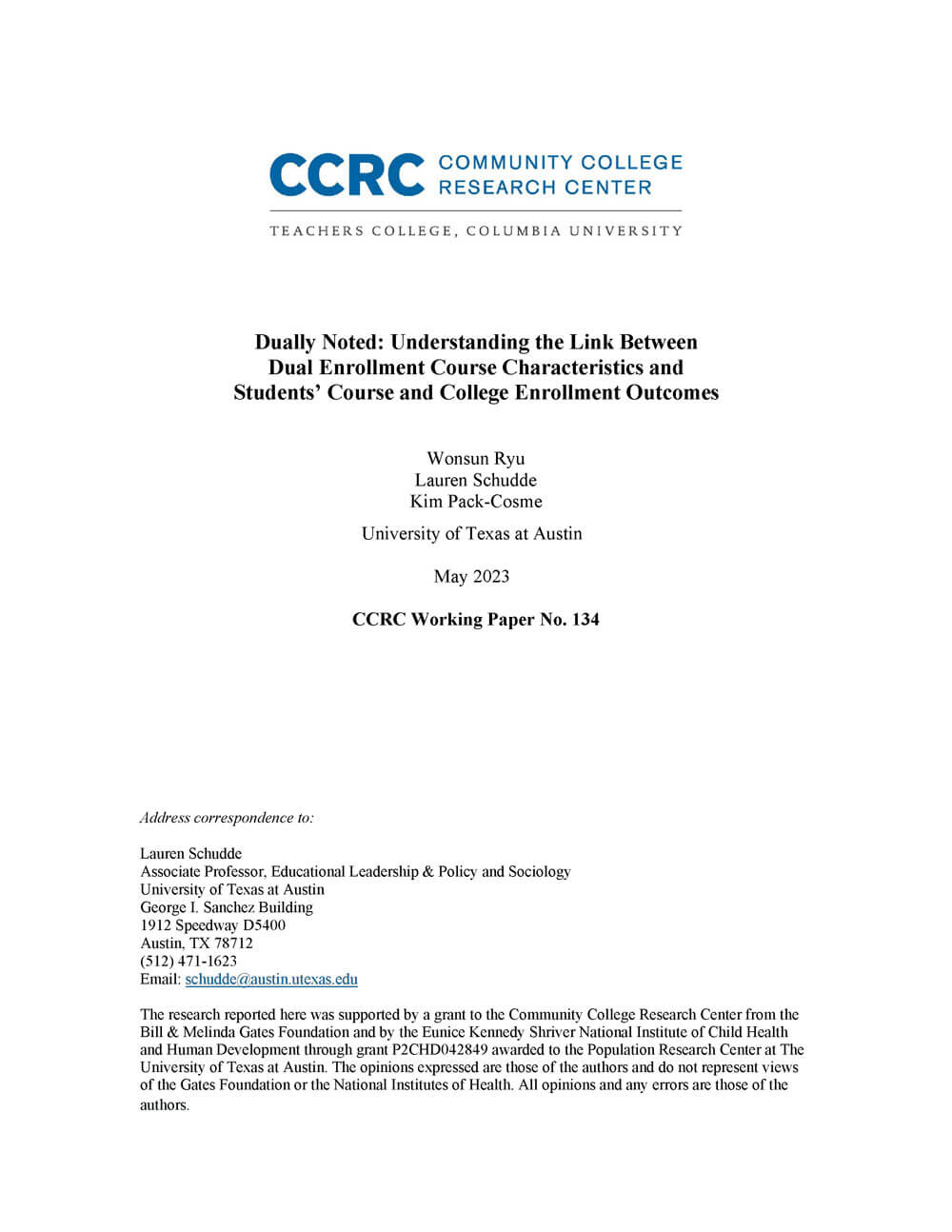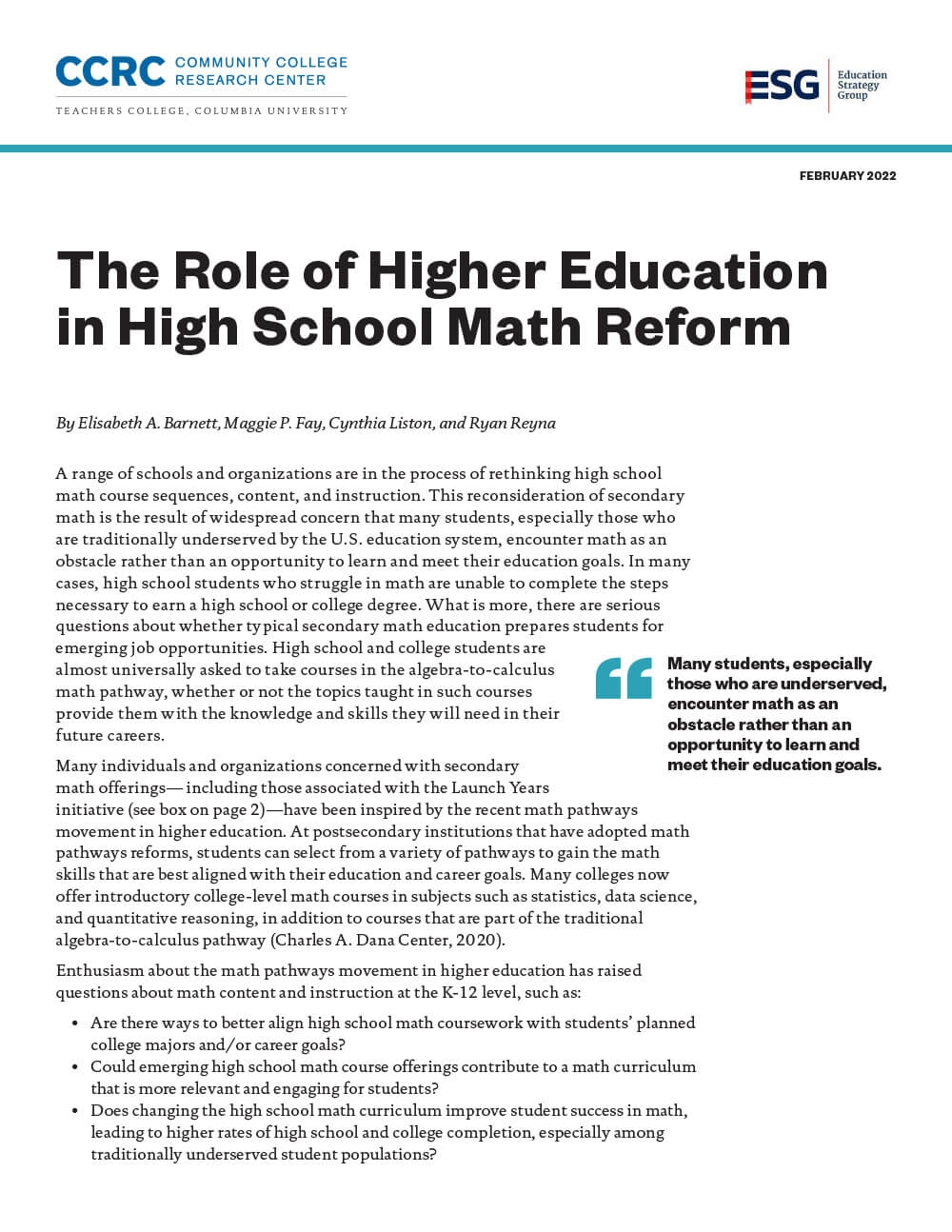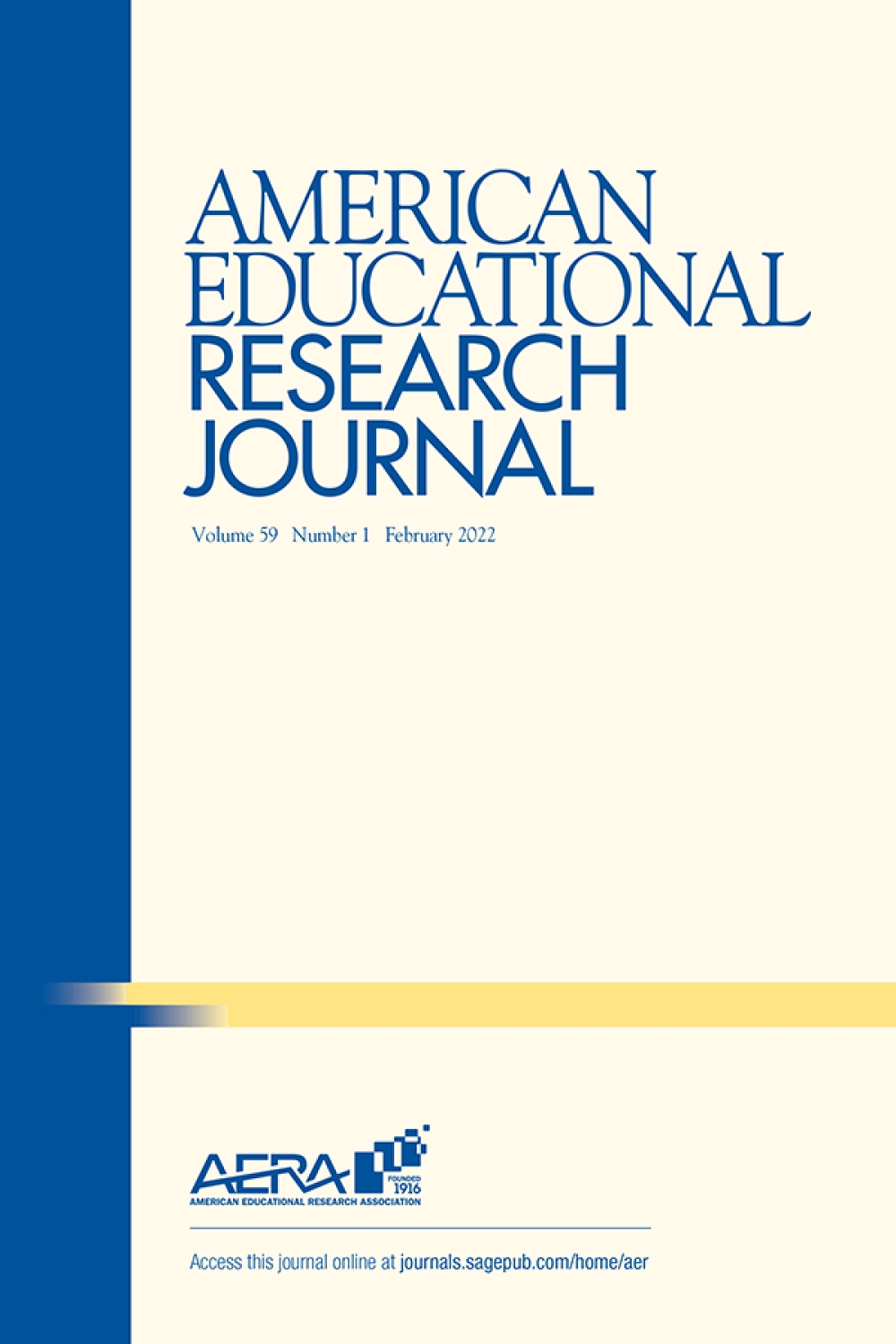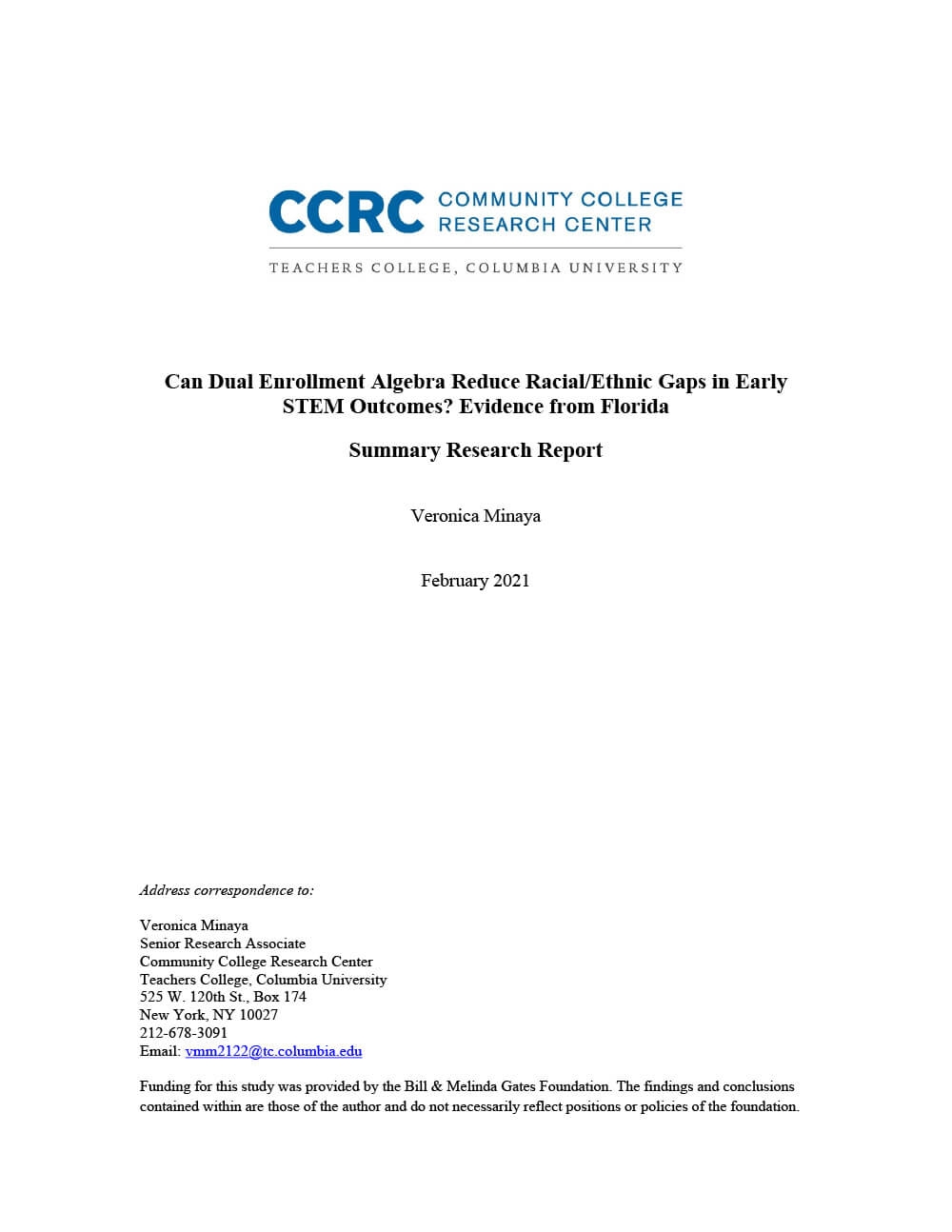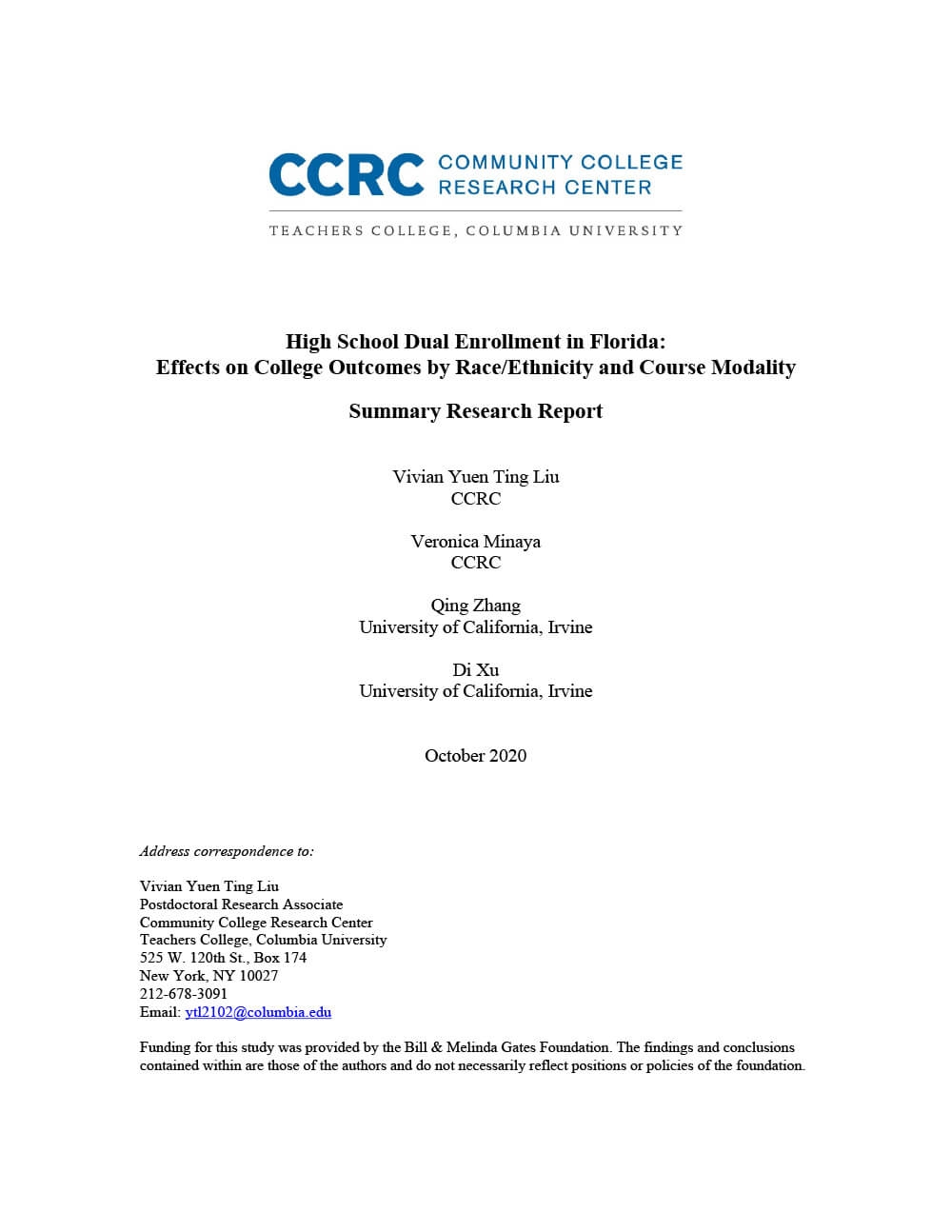October 2023
DEEP Insights: Redesigning Dual Enrollment as a Purposeful Pathway to College and Career Opportunity
This report describes dual enrollment equity pathways (DEEP) reforms implemented by six community college–K-12 partnerships in Florida and Texas, and it provides insights and guidance for other colleges and schools interested in undertaking DEEP reforms.

